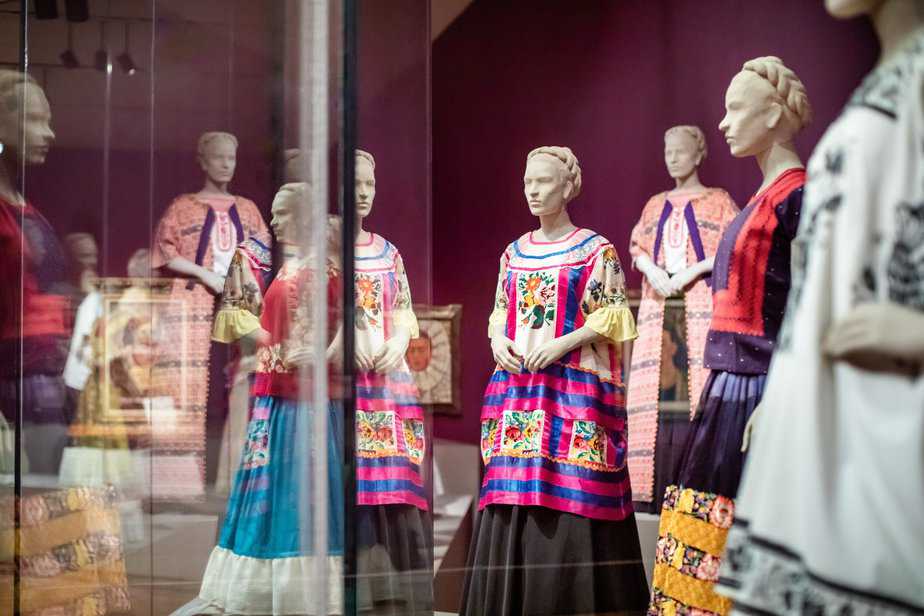“As the city’s museums, we have been eager to be able to share the multifaceted art collections and exhibitions, with airy galleries, and green park settings of the de Young and Legion of Honor with our Bay Area audiences again,” states Thomas P. Campbell, Director and CEO of the Fine Arts Museums of San Francisco. “After many months of quarantine, we are thrilled to open our doors, and look forward to seeing members of our community engaging with art in our galleries.”
The exhibition being featured at the de Young Museum reveals how Frida Kahlo used her dress and other creative enterprises as outlets to cover but also to contend with the physical and emotional traumas that shaped her life. Many of these personal items came to light in 2004 after decades of being sealed off in her lifelong home, La Casa Azul (now Museo Frida Kahlo) in Mexico City.
This critically acclaimed exhibition originated at the Frida Kahlo Museum in Mexico City in 2012. The presentation at the de Young features paintings loaned from American museums and private collectors, highlighting relationships Kahlo established in San Francisco. It also complements the Fine Arts Museums’ costume collection as well as paintings and works on paper by Mexican artists Diego Rivera and José Clemente Orozco, in addition to the Fine Arts Museums’ collection of Mexican antiquities.
For those who are unaware, Kahlo had strong ties to San Francisco. Her encounters with “Gringolandia” (as she called the United States) were formative and complex, and it was during these visits that Kahlo began to fashion her indigenous Mexican identity both in her self-portraits and in her iconic style. While in San Francisco, she painted a double portrait of herself and her husband, Diego Rivera, which was the first time she depicted herself in what would become her iconic Tehuana-inspired dress, marking the beginning of her self-constructed persona.
“Kahlo used her appearance to express her Mexicanidad, her identity as a Mexican woman at a time when her country was undergoing great political and social change,” explains Hillary Olcott, Associate Curator of the Arts of Africa, Oceania, and the Americas. “This became especially important when she left Mexico, and traveled to San Francisco for the first time. She created the double portrait here i nthe city, which is also where it was first shown outside of Mexico.”
de Young and its circle of curators have brought together shows that have pushed the envelope of normal art viewing in the San Francisco Bay Area. Communications associate Shaquille Heath, in our former interview has stressed the beauty and magic of putting together impactful shows, “I’m very grateful to work with such an incredible group of people here at FAMSF who have, truly, a deep love and appreciation for both art and telling stories,” she tells us, “working on an exhibition […] is an incredible experience and is always super exciting […]. To be able to put on shows like this for San Francisco is not only important, but vital.”
Today, Kahlo is known for her unique personal style as much as for her extraordinary art practice. A celebrity during her life, now elevated to icon status, her image is instantly recognizable and widely reproduced. Memorialized in arresting self-portraits and myriad photographs, her image is as much an expression of her creativity as her paintings are. Both her art and style reflect her deeply held personal beliefs, which led to the creation of a magnetic and enduring icon.
// Frida Kahlo: Appearances Can Be Deceiving is organized by independent fashion curator Circe Henestrosa. Hillary Olcott, Associate Curator of the Arts of Africa, Oceania, and the Americas, serves as coordinating curator for the de Young’s presentation. The exhibition is on view at the de Young museum on Friday, September 25th; famsf.org. Photography courtesy of the deYoung Museum.





